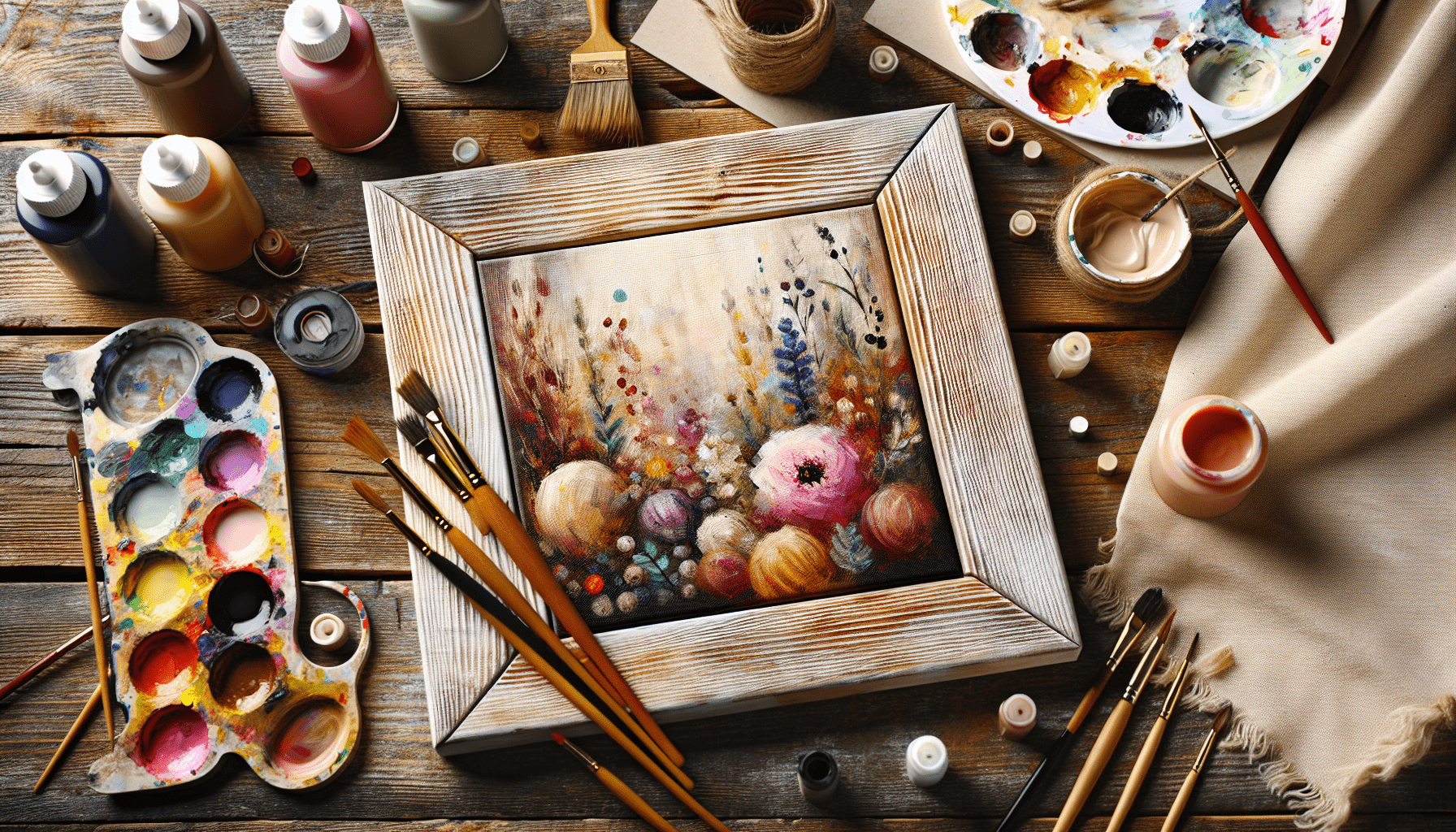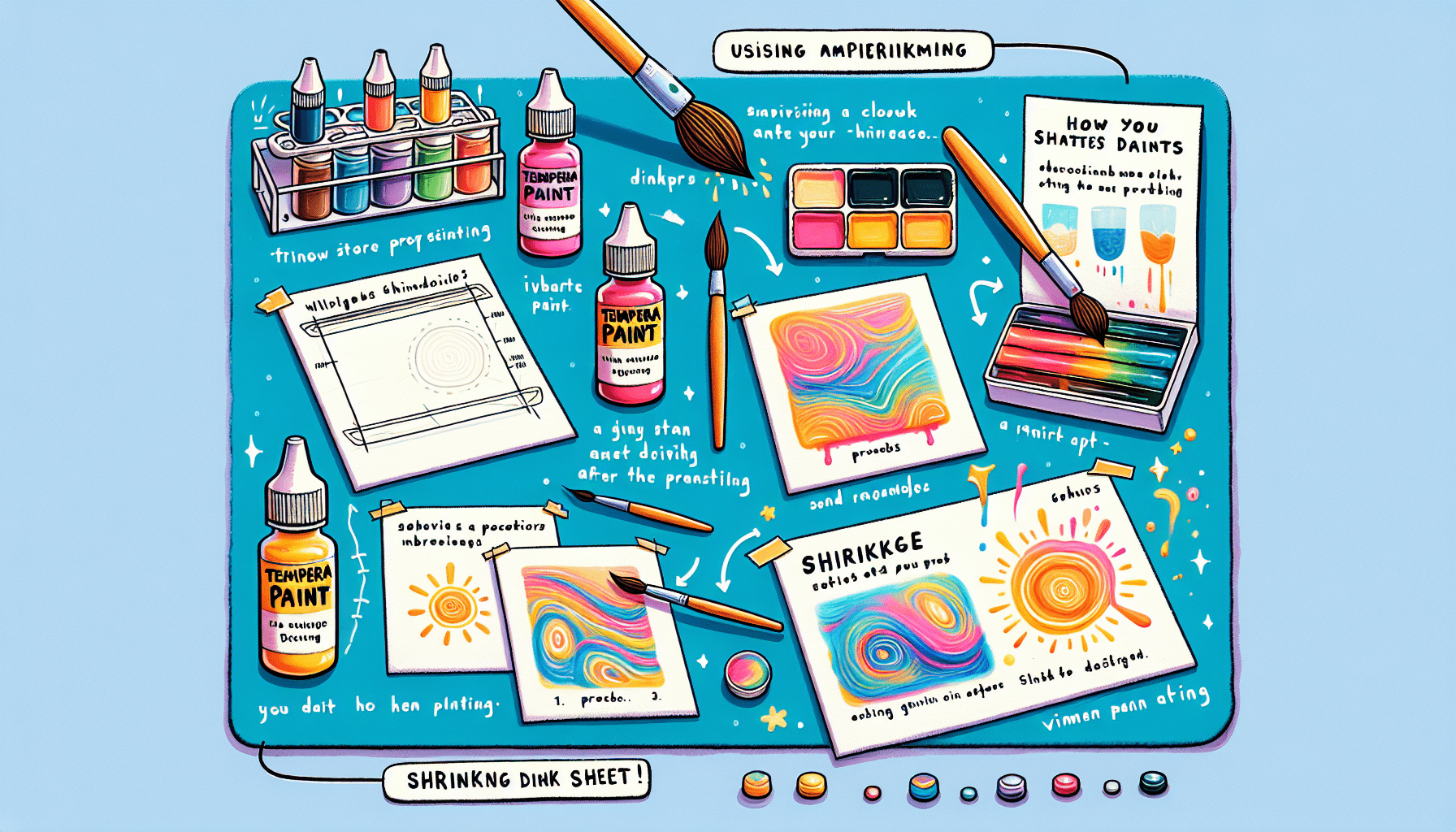Tempera paint has long been a popular choice for various art projects due to its vibrant colors and easy application. However, when it comes to using this type of paint on wood surfaces, there has been some confusion among artists and DIY enthusiasts alike. In this article, we will explore the question of whether tempera paint can be effectively used on wood and examine the potential benefits and drawbacks of doing so. By the end, you will have a clearer understanding of whether tempera paint is a suitable option for your next wood project.

What is Tempera Paint?
Tempera paint is a type of water-based paint that is commonly used in various artistic applications. It consists of pigment (coloring agent) mixed with a water-soluble binder, usually a gum or egg yolk. This unique composition gives tempera paint its characteristic smooth and satiny finish. It is available in a wide range of vibrant colors, making it a popular choice for artists and craftspeople alike.
Definition and Composition
Tempera paint is defined as a medium in which pigments are mixed with a water-soluble binder, typically gum arabic or egg yolk. This binder acts as an adhesive, binding the pigments together and allowing them to adhere to various surfaces, including wood. The ratio of pigment to binder can vary, depending on the desired consistency and opacity of the paint.
Characteristics and Uses
One of the key characteristics of tempera paint is its quick-drying nature. When applied to wood, it dries relatively fast, allowing artists to work on multiple layers or add intricate details without waiting for extended periods. This makes it a versatile option for both professional artists and amateurs.
Tempera paint is known for its vibrant and opaque colors. The pigments used in tempera paints are finely ground, resulting in rich, saturated hues. This property makes tempera paint particularly suitable for creating bold and expressive designs on wood surfaces.
Additionally, tempera paint is water-soluble, which means that it can be diluted with water to achieve different levels of transparency. This makes it easy to create washes or glazes to enhance the visual effect of the wood grain or achieve a desired artistic effect.
While tempera paint offers various benefits, it also has some limitations. It is not as durable as other types of paint, such as oil or acrylic, and may not withstand heavy wear and tear. Therefore, it may be more appropriate for decorative or indoor artistic projects rather than functional items or outdoor applications.
Preparing the Wood Surface
Before applying tempera paint to wood, it is essential to properly prepare the surface. This ensures that the paint adheres well and provides a smooth and long-lasting finish.
Sanding and Smoothing the Wood
Begin by sanding the wood surface using sandpaper with a medium grit. This helps to remove any rough spots or imperfections, creating a smooth base for the paint to adhere to. Sanding also helps in improving the overall appearance of the final artwork.
Cleaning and Priming the Wood
After sanding, thoroughly clean the wood surface to remove any dust or debris. Use a damp cloth or sponge to wipe down the surface, ensuring it is free from any dirt or oils that may interfere with paint adhesion.
Once the wood is clean and dry, apply a suitable primer to create a smooth and even surface for the tempera paint. Choose a primer that is compatible with both wood and tempera paint, ensuring proper adhesion and preventing any potential issues such as peeling or cracking.

Applying Tempera Paint on Wood
With the wood surface prepared, it is time to apply the tempera paint. By following a few key steps, you can achieve the best results and create stunning artwork.
Choosing the Right Brushes
Selecting appropriate brushes is crucial for achieving desired effects and ensuring even coverage. For larger areas, use flat brushes, while thin and pointed brushes are ideal for creating intricate details. Consider using natural hair brushes or synthetic brushes specifically designed for use with water-based paints like tempera.
Applying a Base Coat
Start by applying a base coat of tempera paint to the wood surface. A base coat helps to establish an even background color and provides a foundation for subsequent layers. Apply the paint with even strokes, working in one direction to achieve consistent coverage. Allow the base coat to dry completely before proceeding to the next steps.
Creating Design and Details
Once the base coat is dry, it is time to unleash your creativity and add design and details to your artwork. Use different colors of tempera paint to create patterns, images, or any desired artistic effects. Build up the layers gradually, allowing each layer to dry before adding additional details. This technique ensures better control and prevents smudging or blending of colors.
Drying and Sealing the Paint
Once you have completed your artwork, it is crucial to properly dry and seal the tempera paint to protect it and ensure its longevity.
Allowing Sufficient Drying Time
Tempera paint generally dries quickly; however, it is advisable to allow sufficient drying time before handling or sealing the painted wood surface. This time can vary depending on factors such as humidity, the number of layers applied, and the thickness of the paint. Refer to the paint manufacturer’s instructions for specific drying times.
Applying a Sealant
To protect the tempera paint and prolong its life, apply a sealant over the painted wood surface. Choose a suitable sealant that is compatible with both the paint and the wood. Apply the sealant in thin, even coats, allowing each coat to dry before applying additional layers. A sealant helps to prevent chipping, fading, and moisture damage, ensuring the longevity of the artwork.
Benefits and Drawbacks of Using Tempera Paint on Wood
Using tempera paint on wood offers several benefits and drawbacks that should be taken into consideration before embarking on a project.
Vibrant Colors
Tempera paint is known for its vibrant and opaque colors. The pigments used in tempera paints are finely ground, resulting in rich, saturated hues. This makes tempera paint an excellent choice for creating eye-catching and expressive designs on wood surfaces.
Quick Drying
One of the advantages of tempera paint is its quick-drying nature. This property allows artists to work on multiple layers or add intricate details without waiting for extended periods. It also means that projects can be completed more efficiently, reducing overall waiting time.
Water-Soluble
Tempera paint is water-soluble, meaning it can be diluted with water to achieve different levels of transparency. This property makes it versatile for a range of artistic techniques, including washes and glazes. It also allows for easy cleaning of brushes and other painting tools.
Limited Longevity
While tempera paint provides vibrant and immediate results, its longevity may be limited compared to other types of paint, such as acrylic or oil-based paints. Tempera paint is not as durable and may not withstand heavy wear and tear. Therefore, it may be more suitable for decorative or indoor artistic projects rather than functional items or outdoor applications.
Not Suitable for Outdoor Use
Since tempera paint is water-based, it is not recommended for outdoor use or on surfaces that come into contact with moisture or extreme weather conditions. Exposure to these elements can lead to the degradation of the paint, compromising the integrity and appearance of the artwork.
Tips and Precautions for Using Tempera Paint on Wood
To achieve the best results when using tempera paint on wood, follow these tips and precautions:
Working in a Well-Ventilated Area
Ensure that you are working in a well-ventilated area when using tempera paint. Proper ventilation helps to dissipate fumes and allows for a healthier working environment.
Using Light Layers
When applying tempera paint, it is better to use light layers rather than heavy applications. Light layers dry more evenly and quickly, reducing the risk of cracking or peeling.
Avoiding Excessive Water
While tempera paint is water-soluble, it is important not to use excessive amounts of water when diluting the paint or cleaning brushes. Too much water can weaken the paint’s bond with the wood surface and affect its adhesion and durability.
Testing Compatibility on a Scrap Wood
Before starting a project on the actual wood surface, it is advisable to test the compatibility of tempera paint on a scrap piece of wood. This allows you to evaluate the adhesion, drying time, and overall appearance of the paint before committing to the final project.
Alternative Paint Options for Wood
While tempera paint offers unique properties and benefits, there are alternative paint options available for wood surfaces.
Acrylic Paint
Acrylic paint is a popular choice for wood projects due to its durability and versatility. It provides vibrant colors, is water-resistant when dry, and can be used both indoors and outdoors. Acrylic paint also has a longer lifespan compared to tempera paint.
Oil-based Paint
Oil-based paint is known for its durability and longevity. It provides a glossy finish, making it suitable for both decorative and functional wood projects. However, oil-based paint requires longer drying times and may emit strong odors, necessitating proper ventilation during application.
Wood Stains
Wood stains are specifically designed to enhance the natural beauty of wood while providing protection. They penetrate the wood surface, highlighting the grain and providing a durable finish. Depending on the desired effect, wood stains are available in a range of colors and opacities.
Preserving and Maintaining Painted Wood
To preserve and maintain painted wood surfaces, follow these guidelines:
Regular Cleaning
Regularly clean painted wood surfaces using a gentle cleanser and a soft cloth. Avoid abrasive cleaners or tools that may damage the paint or wood.
Avoiding Direct Sunlight
Excessive exposure to direct sunlight can cause fading or discoloration of painted wood surfaces. If possible, avoid placing painted wood items in areas with prolonged exposure to sunlight.
Touch-Ups and Repairs
Over time, painted wood surfaces may require touch-ups or repairs. Keep a small amount of the original paint to match colors accurately and address any chips or wear.
Inspiring Projects Using Tempera Paint on Wood
Tempera paint can be used to create a wide range of inspiring projects on wood surfaces. Here are a few ideas to spark your creativity:
Decorative Wall Art
Create unique and personalized wall art using tempera paint on wood. Whether it’s a vibrant abstract design or a nature-inspired mural, tempera paint allows for endless possibilities to transform any space.
Hand-painted Furniture
Give new life to old or plain furniture by using tempera paint to add intricate designs or patterns. From a whimsical dresser to a beautifully painted tabletop, tempera paint can turn ordinary furniture into eye-catching pieces.
Children’s Crafts
Tempera paint is a great medium for children’s crafts. From wooden toys to homemade picture frames, tempera paint can be used to create joyful and colorful projects that children can proudly display.
Conclusion
Using tempera paint on wood provides a unique opportunity to explore your creativity and create stunning artwork. Its vibrant colors, quick drying time, and water-soluble nature make it a versatile choice for both professional artists and creative enthusiasts. By properly preparing the wood surface, applying the paint with the right techniques, and protecting the finished artwork, you can enjoy the beauty and longevity of tempera paint on wood. So go ahead, unleash your artistic flair, and discover the endless possibilities of tempera paint on wood!



